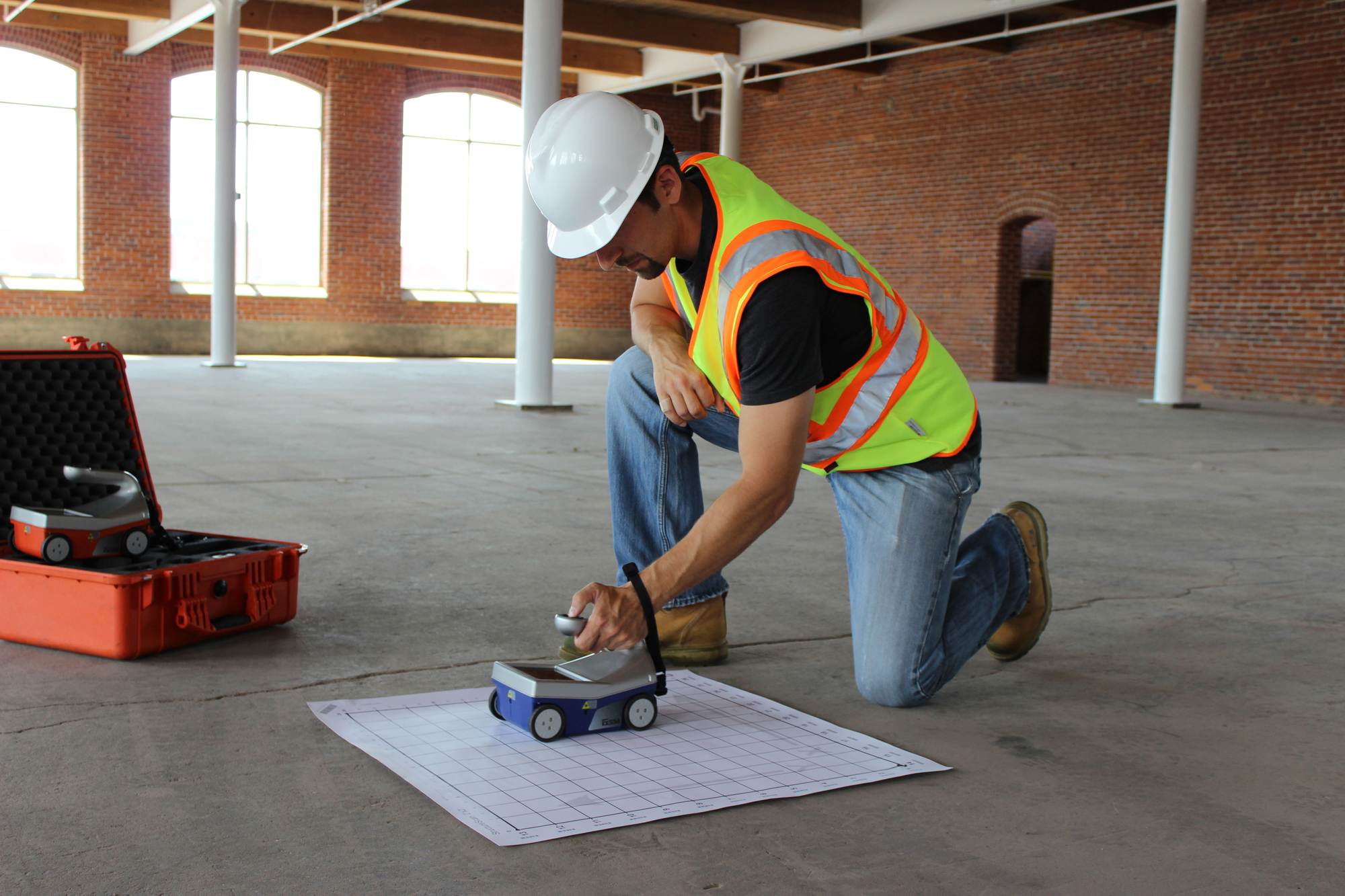Discover RainierGPR Service Areas for Reputable Concrete Scanning Solutions
Discover RainierGPR Service Areas for Reputable Concrete Scanning Solutions
Blog Article
Concrete Scanning: A Vital Step In The Direction Of Ensuring Architectural Stability and Security
In the realm of building and construction and framework upkeep, the value of concrete scanning can not be overstated. This precise process holds the key to unveiling possible dangers concealed below the surface area of seemingly solid structures. By utilizing advanced technology and techniques, concrete scanning functions as a pivotal tool in ensuring that the integrity and security of buildings and bridges are upheld to the highest possible standards. However, past its surface-level implications, the duty of concrete scanning prolongs far deeper than satisfies the eye.
Importance of Concrete Scanning
Concrete scanning plays an important role in making certain the architectural honesty and security of structures and infrastructure tasks. By utilizing sophisticated technologies such as ground-penetrating radar (GPR) and electromagnetic induction, experts can non-destructively evaluate concrete frameworks to identify possible flaws, voids, ingrained objects, and reinforcement format. This process allows early detection of anomalies that might jeopardize the security of a framework, preventing pricey problems and ensuring the security of occupants.
Concrete scanning is particularly important during the preparation and building stages of a task. Prior to drilling, reducing, or coring right into concrete, scanning aids identify the precise locations of rebar, post-tension cable televisions, and other embedded aspects, minimizing the risk of unintentional hits that could bring about architectural weak points. Additionally, concrete scanning aids in quality assurance by verifying the thickness of concrete covers and detecting any disparities that may impact the overall toughness of the framework. Eventually, purchasing concrete scanning services is not just an aggressive step to reduce risks but likewise an essential action in the direction of preserving the long-lasting security and security of structures and facilities.
Innovation for Concrete Examination

Advantages of Early Detection
Timely discovery of structural problems can dramatically alleviate dangers and guarantee the longevity of construction jobs. By recognizing prospective problems beforehand in the construction process, stakeholders can take proactive measures to attend to concerns before they intensify into bigger and more expensive problems. One of the essential advantages of early discovery is the avoidance of architectural failings, which can pose significant safety dangers and lead to task delays and economic losses.
In addition, very early discovery enables prompt repair services and upkeep, which can assist extend the lifespan of the structure. By attending to read more concerns immediately, construction teams can stay clear of costly fixings or perhaps the demand for premature replacement of structural parts. This positive strategy not just conserves money and time but likewise enhances the general safety and security and resilience of the building and construction job.
Furthermore, very early detection can boost project planning and decision-making by giving stakeholders with beneficial insights right into the problem of the structure. Armed with this details, job supervisors can make informed choices concerning construction approaches, products, and timelines, causing extra successful and reliable job results.
Ensuring Architectural Stability
Ensuring the structural security of a building job is paramount to its safety and longevity. Architectural stability refers to the capability of a building or infrastructure to preserve its type and feature under various lots and environmental conditions. To achieve this, thorough evaluation and surveillance of the framework are necessary. Concrete scanning plays an essential function in ensuring structural security by spotting potential issues such special info as voids, delamination, or reinforcement corrosion that could compromise the honesty of the framework in time.
By making use of innovative scanning modern technologies like ground-penetrating radar (GPR) and electromagnetic induction, building and construction professionals can non-invasively evaluate concrete structures to identify areas of issue under the surface. This aggressive method permits the very early detection of flaws or weaknesses, enabling punctual repairs or reinforcement to stop architectural failures.
Regular concrete scanning throughout various building stages and throughout the life process of a framework can help keep its security, alleviate risks, and ensure the reference safety of occupants. By focusing on structural security via concrete scanning, building projects can improve their durability and resilience, inevitably adding to better safety and security and longevity.
Preventing Essential Failures
To protect against devastating events, precise tracking and aggressive maintenance are necessary in preventing vital failures within architectural frameworks. Finding potential problems before they intensify is vital to avoid architectural failures. Applying regular examinations, such as concrete scanning, can expose concealed issues like gaps, splits, or deterioration that could endanger the stability of a framework. By using advanced scanning modern technologies like Ground Passing through Radar (GPR) or Concrete X-ray, designers can non-destructively assess the problem of concrete and recognize powerlessness that need support or repair work - RainierGPR Service Areas.

Conclusion
To conclude, concrete scanning plays a vital role in making certain structural honesty and safety by making use of innovative technology for very early discovery of prospective concerns. This proactive technique helps protect against vital failures and guarantees the stability of frameworks. It is vital to prioritize concrete assessment as a conventional technique to protect the durability and safety of buildings and framework.
Concrete scanning plays a crucial role in making certain the structural integrity and security of buildings and framework projects. Furthermore, concrete scanning aids in high quality control by verifying the thickness of concrete covers and identifying any type of inconsistencies that might impact the overall longevity of the structure. Concrete scanning plays a critical role in making sure architectural security by finding potential problems such as voids, delamination, or reinforcement rust that can compromise the stability of the framework over time.

In verdict, concrete scanning plays an important duty in making certain architectural stability and safety by utilizing advanced innovation for very early detection of possible issues.
Report this page